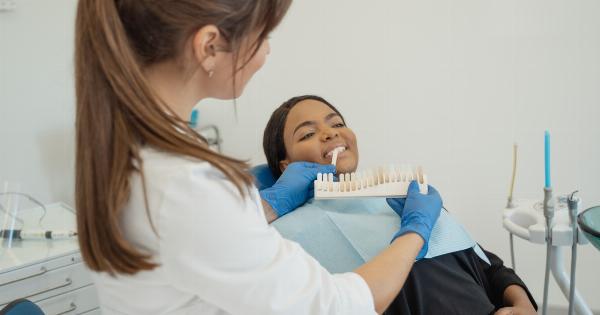Folliculitis is a common skin condition that occurs when hair follicles become inflamed or infected. It usually manifests as small, red, and itchy bumps, which may be filled with pus or fluid.
While it can affect any part of the body where hair grows, it commonly occurs on the scalp, face, neck, chest, back, buttocks, and thighs. In this article, we will discuss the symptoms, causes, and treatment options for folliculitis.
Symptoms of Folliculitis
Folliculitis can cause a range of symptoms, depending on the type, severity, and location of the infection. Some of the most common symptoms include:.
- Clusters of small, red, or white bumps around hair follicles
- Itching, burning, or tenderness on the affected area
- Pain or discomfort when the bumps are touched or squeezed
- Pus-filled or fluid-filled blisters that may burst, crust over, or spread to nearby follicles
- Scarring or darkening of the skin (rare in mild cases)
In some cases, folliculitis can be accompanied by other symptoms such as fever, fatigue, and swollen lymph nodes. This usually happens when the infection is severe or has spread to other parts of the body.
Causes of Folliculitis
There are several factors that can trigger the development of folliculitis, including:.
- Bacterial or fungal infections: Folliculitis can be caused by bacteria (such as Staphylococcus aureus) or fungi (such as Candida).
- Irritation or trauma to the skin: Scratching, shaving, friction, or wearing tight clothing can damage hair follicles and make them more vulnerable to infection.
- Acne or dermatitis: People with acne or skin conditions that cause inflammation may be more prone to folliculitis.
- Immune system disorders: Folliculitis can be a sign of a weakened immune system, which can make it harder for the body to fight off infections.
- Sweating or heat: Hot and humid environments can create a breeding ground for bacteria that cause folliculitis.
- Sharing personal items: Using contaminated towels, razors, or other personal items can spread infections from one person to another.
- Poor hygiene: Not practicing good skin care habits, such as washing regularly and avoiding harsh products, can increase the risk of folliculitis.
Treatment Options for Folliculitis
The treatment of folliculitis depends on the type, severity, and location of the infection. In mild cases, the symptoms may resolve on their own within a few days, especially if you take steps to soothe and protect the affected area.
Some home remedies that may help include:.
- Applying warm compresses to the affected area to reduce inflammation, pain, and itching.
- Cleansing the area with mild soap and water to remove dirt, oil, and bacteria.
- Avoiding tight clothing, friction, and other sources of irritation that can exacerbate the condition.
- Using over-the-counter anti-itch creams, lotions, or ointments to relieve symptoms.
- Applying aloe vera gel, tea tree oil, or other natural remedies that have antibacterial, anti-inflammatory, or soothing properties.
If the symptoms persist or worsen, or if the infection spreads to other parts of the body, you may need to see a doctor for further evaluation and treatment. Some of the options that your doctor may recommend include:.
- Prescription antibiotics or antifungal medication, which can be taken orally or applied topically, depending on the type of infection.
- Corticosteroid creams or ointments, which can reduce inflammation and itching.
- Incision and drainage of pus-filled lesions, which may be necessary in severe or persistent cases.
- Laser hair removal, which can eliminate hair follicles and prevent future infections (especially for recurrent folliculitis).
It is important to follow your doctor’s instructions and complete the full course of treatment, even if the symptoms subside. Failure to do so may lead to recurrence or complications, such as scarring, abscess formation, or systemic infection.
Preventing Folliculitis
Preventing folliculitis can be challenging, but there are several measures that can reduce the risk or severity of the condition. These include:.
- Practice good hygiene: Wash your skin regularly with mild soap and water, and avoid sharing personal items.
- Avoid irritating your skin: Don’t scratch, pick, or rub your skin excessively, and wear loose-fitting clothing that doesn’t rub or chafe.
- Take care with hair removal: Use clean razors or electric trimmers, and avoid shaving too close or too often. For waxing or threading, make sure the salon uses sterile equipment.
- Keep your skin cool and dry: Avoid sweaty or humid environments, and change your clothes or towels frequently.
- Treat underlying conditions: If you have acne, eczema, or other skin conditions, make sure to follow your doctor’s recommended treatment plan.
Conclusion
Folliculitis is a common and bothersome skin condition that can cause itching, burning, and inflammation on different parts of the body.
While it can be caused by various factors, such as bacteria, fungi, and irritation, it can usually be managed with simple home remedies or medical treatments. If you suspect that you have folliculitis, make sure to take prompt action to reduce the symptoms and prevent complications. Follow good hygiene practices, avoid skin irritation, and seek medical advice if the condition persists or worsens.





























